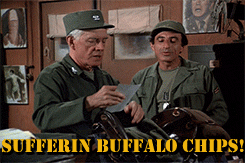I finally managed to sit through “It’s a Wonderful World.”
On paper I should really enjoy the film: Starring Claudette Colbert and James Stewart, script by Ben Hecht, directed by W. S. Van Dyke, made in 1939. All of these are points in its favor.
When I first tried to watch this movie, I stopped after about 20 minutes. But that was a couple of years ago. All that has remained is a vague memory of a headache. I decided I finally had to see the film. I knew at some point James Stewart would be disguised as a scout master, and I at least had to see that much.
After breaking through the 20-minute mark the plot started looking very familiar. The story is basically an American adaptation of Hitchcock’s adaptation of “The 39 Steps.” The hero, in order to clear his name and escape police, jumps from a train that’s crossing a bridge. He is then thrown together with a woman. At first she assumes he is a dangerous criminal. He plays along. They spend some time together in handcuffs. She gets away while he is asleep and finds out who he really is. Now she wants to help him solve the mystery. This all leads to the movie’s climax in a theater, sort of.
It sounds like it should be a fun, romantic adventure. “The 39 Steps” is, but this isn’t. It somehow manages to be slow-paced and frantic at the same time.
The most unforgivable aspect of the story-telling comes at the end — Stewart solves the central mystery off-camera. It apparently happens between the third and fourth acts. We never see him do any detective work. This makes the rest of the movie nothing but tedious padding.
Claudette Colbert
Claudette Colbert’s primary direction for his film appears to have been “over-act and shout a lot.” Her character is a poetess. I’m just mentioning this because it’s pointed-out a number of times throughout the film. It doesn’t contribute to the plot in any way.
She is supposed to be a bookish person who enthusiastically wants to help James Stewart because it’s something new and adventurous. The trouble is, she’s glamorous from beginning to end. Her charater has no personal growth. They could at least have given her a little pair of glasses to wear at the start. Glasses she takes off at some point to symbolize the change that has been made in her life. That’s just basic script writing. See “Four Frightened People” for an example of this done right.
James Stewart
This movie stars pre-war James Stewart. This is as opposed to post-war James Stewart, who usually played the same character in every movie. In this film he plays a jaded, woman-hating private detective. This seems like a promising start, but he too undergoes no personal growth. He remains an unlikable jerk from beginning to end.
Grady Sutton
Grady Sutton is in this movie. He plays a normal person and only gets one line. That’s bad movie-making.
Guy Kibbee
Would you believe the only actor worth watching in this movie is Guy Kibbee? Somehow he manages to make his character the only interesting and occasionally funny aspect of it.
In conclusion
There is one interesting moment in this film. Blink and it’s gone. At one point Colbert needs to distract a group of police. Her character has been reported missing and it is assumed she has been kidnapped by Stewart. So she identifies herself to them, talking a-mile-a-minute. A press photographer accompanying the police vouches for her. He says he knows it’s her because he photographed her last week. “Yes,” she says to him, “at the Spain rally.” Then she turns back to the police and resumes distracting them.
So, we see her character is Antifa.
It’s a quick aside, but an odd thing to find in an MGM film from 1939. It’s more like something you would expect from Warner Brothers.


